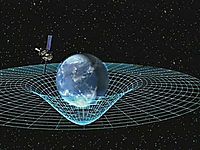
Photo from wikipedia
Abstract How a volcano has behaved throughout its past is a guide to its future behaviour. Detailed knowledge of what preceded eruptions from specific volcanoes, and how this can be… Click to show full abstract
Abstract How a volcano has behaved throughout its past is a guide to its future behaviour. Detailed knowledge of what preceded eruptions from specific volcanoes, and how this can be recognised in real-time, are pivotal questions of this field. Here, the physical history of the magma that erupted in 2010 from the flank of Eyjafjallajokull volcano, Iceland, is reconstructed in absolute time and space using only chemical records from erupted crystals. The details of this reconstruction include the number of magma bodies, their geometry, their depth, their relative inflation rate and changes to all of the aforementioned through time. Petrology and geodesy (data gathered in real-time) arrive at the same set of conclusions. As such, we report detailed agreement, which demonstrates a causative link between knowledge determined post-eruption via a physical–chemical perspective and knowledge gained syn-eruption from monitoring signals. The composition of olivine crystal cores (∼Fo74–87), and that of the chemical zonation around each core caused by disequilibrium processes, are shown to form systematic patterns at the population scale. Reverse zonation (toward Mg rich) exhibits a constant chemical offset from its crystal core (≤2 mol % Fo), while normal zonation (toward Fe rich) converges to a single composition (∼Fo75). Conventional petrological models — for instance multiple-magma-mixing across a range of crustal depths — can explain the presence of a range of crystal core composition in the erupted rocks, but cannot explain these patterns of crystal disequilibria. Instead, we describe how a single primitive melt produces crystals over a wide range in composition and generates systematic disequilibrium. Cooling causes crystal production from both roof and floor of a horizontal magma geometry. Crystal settling causes asymmetric thermal – and therefore compositional – stratification of the melt due to progressive insulation via development of a crystal mush at the floor, a process we term “Crystal Rain”. Crucially, each crystal's record is both a cause and effect of the internal process of simultaneous fractional crystallisation and settling; no external processes or materials are required. We then extract temporal information from our crystals using Fe–Mg interdiffusion modelling, and combine it with the composition and zonation data. The concept of Crystal Rain is applied, and resolves two thin (metres) sills which are staggered in time and depth, and exhibit different inflation rates. Since the approach of integrating crystal chronology within a causative physical framework may be applied to entire volcanic successions, it has potential to yield valuable insights to past, and by inference future, magmatic and volcanic behaviours by deterministic means.
Journal Title: Earth and Planetary Science Letters
Year Published: 2018
Link to full text (if available)
Share on Social Media: Sign Up to like & get
recommendations!